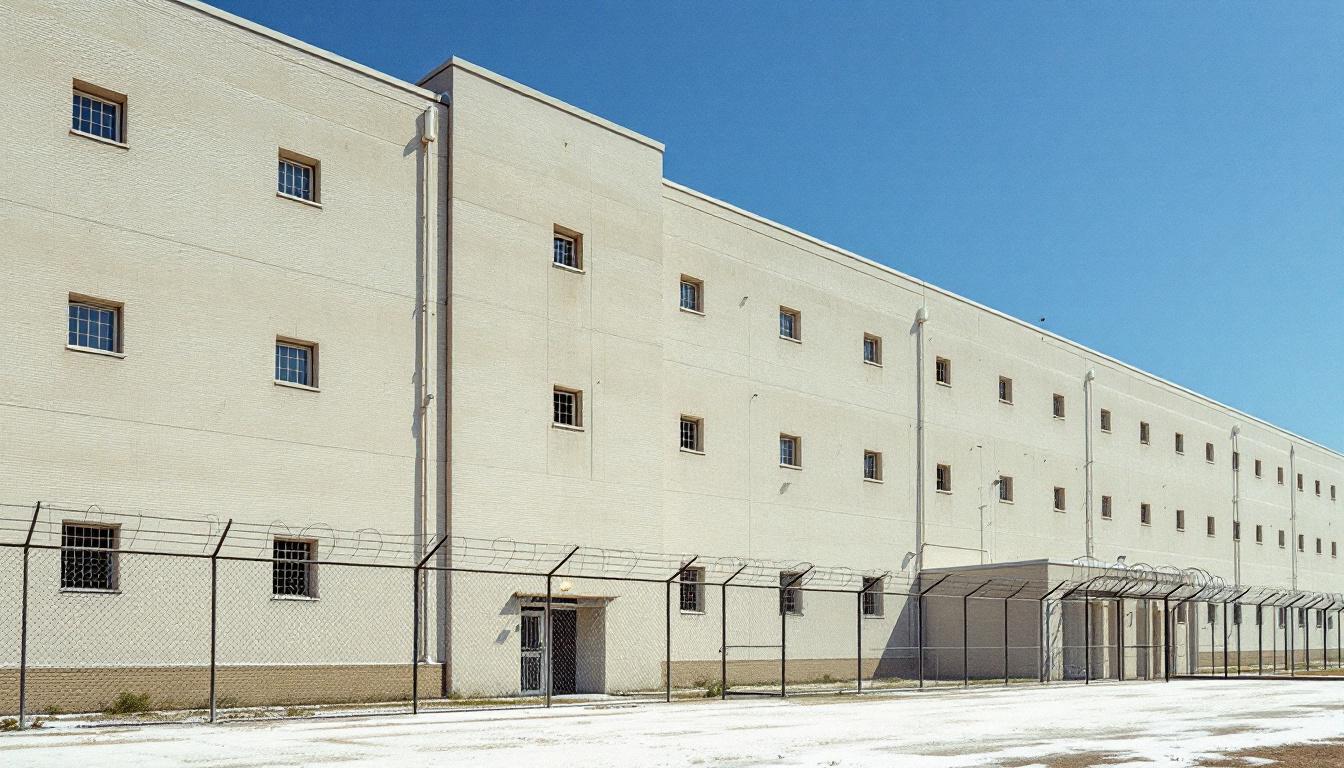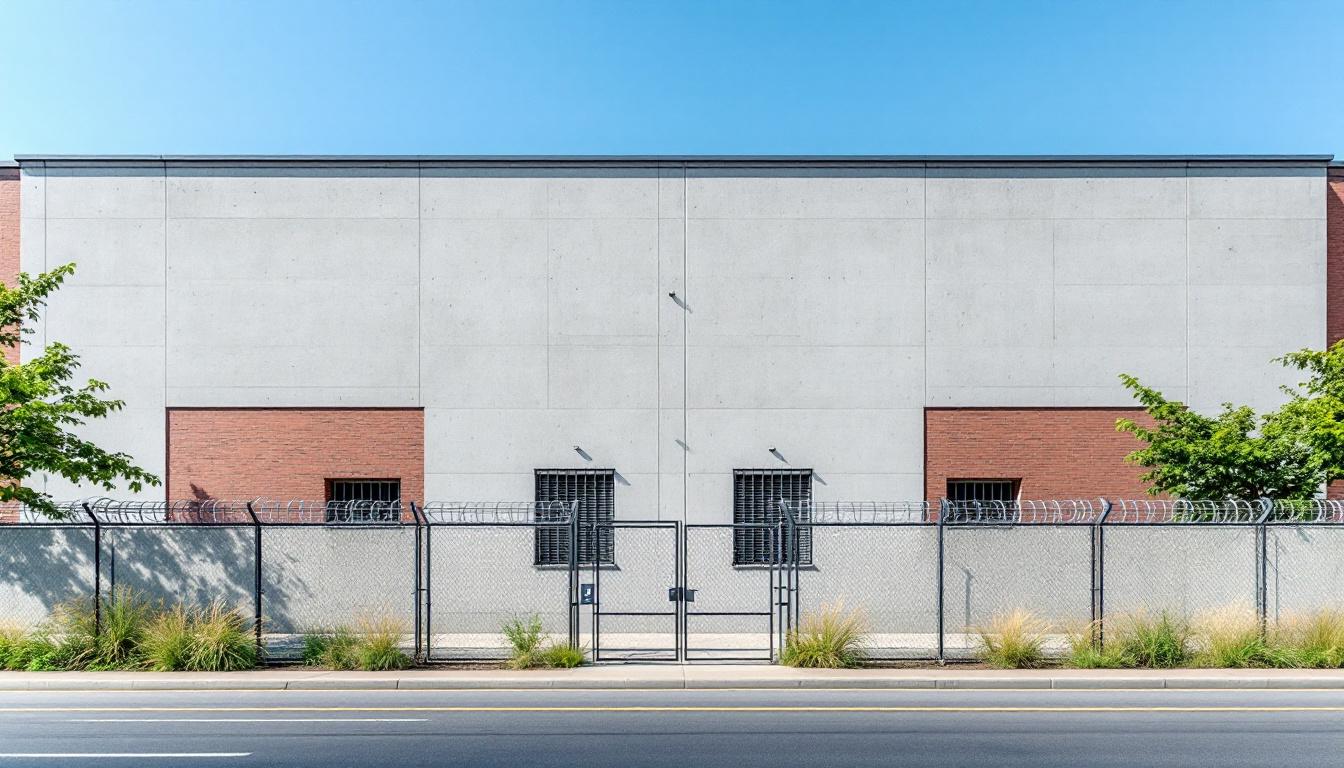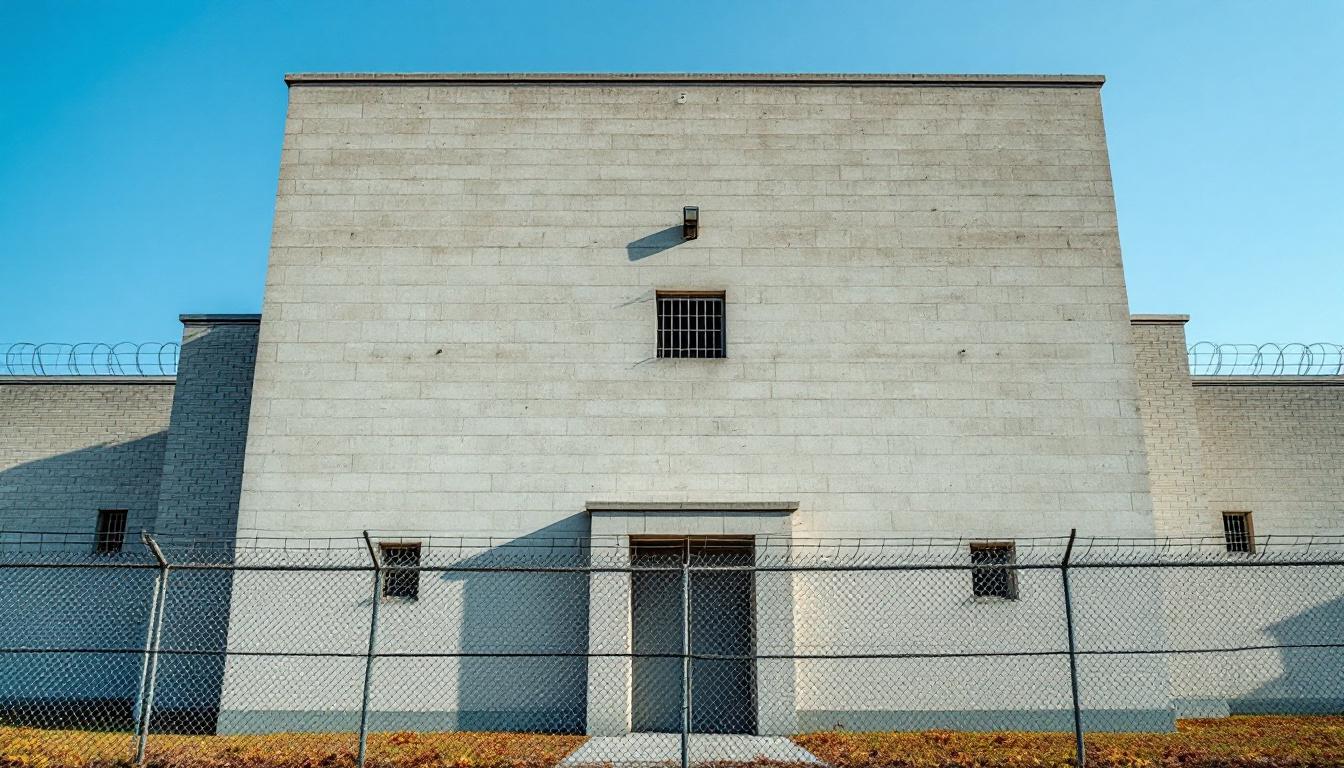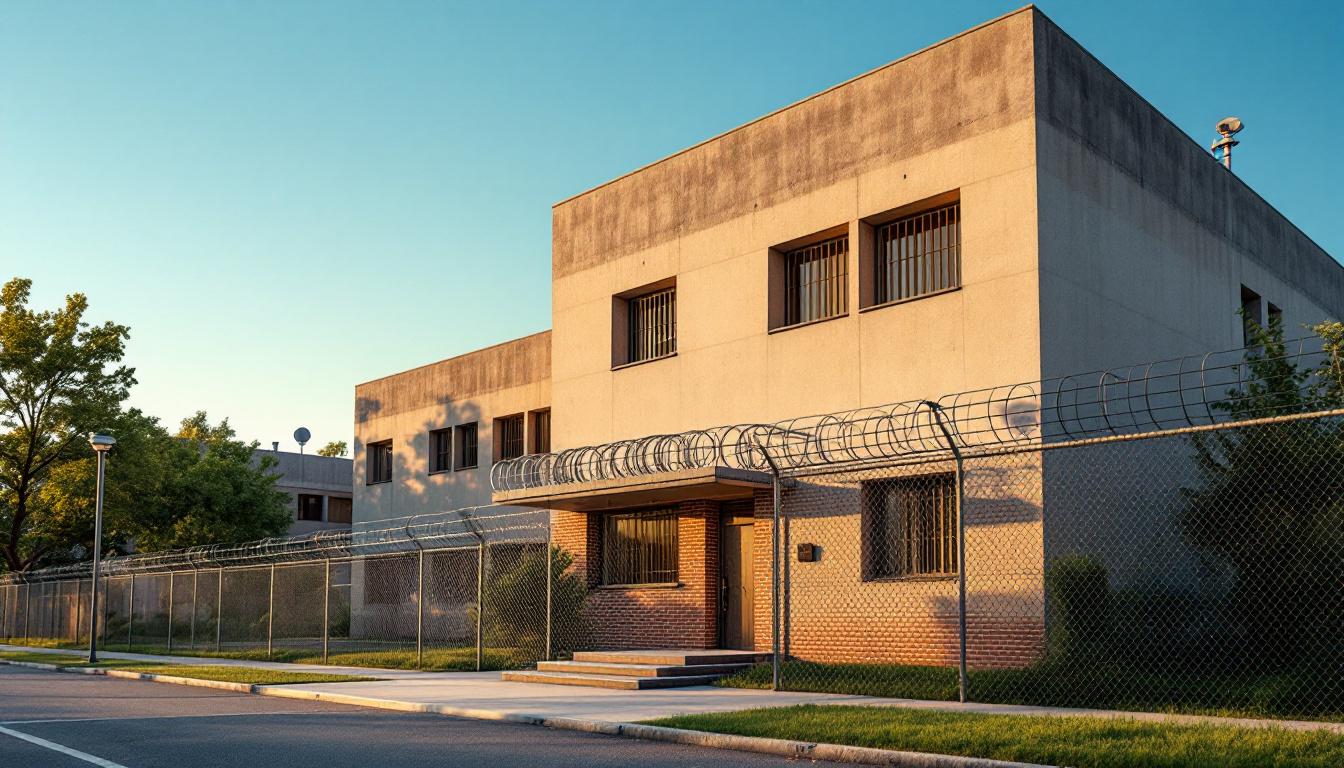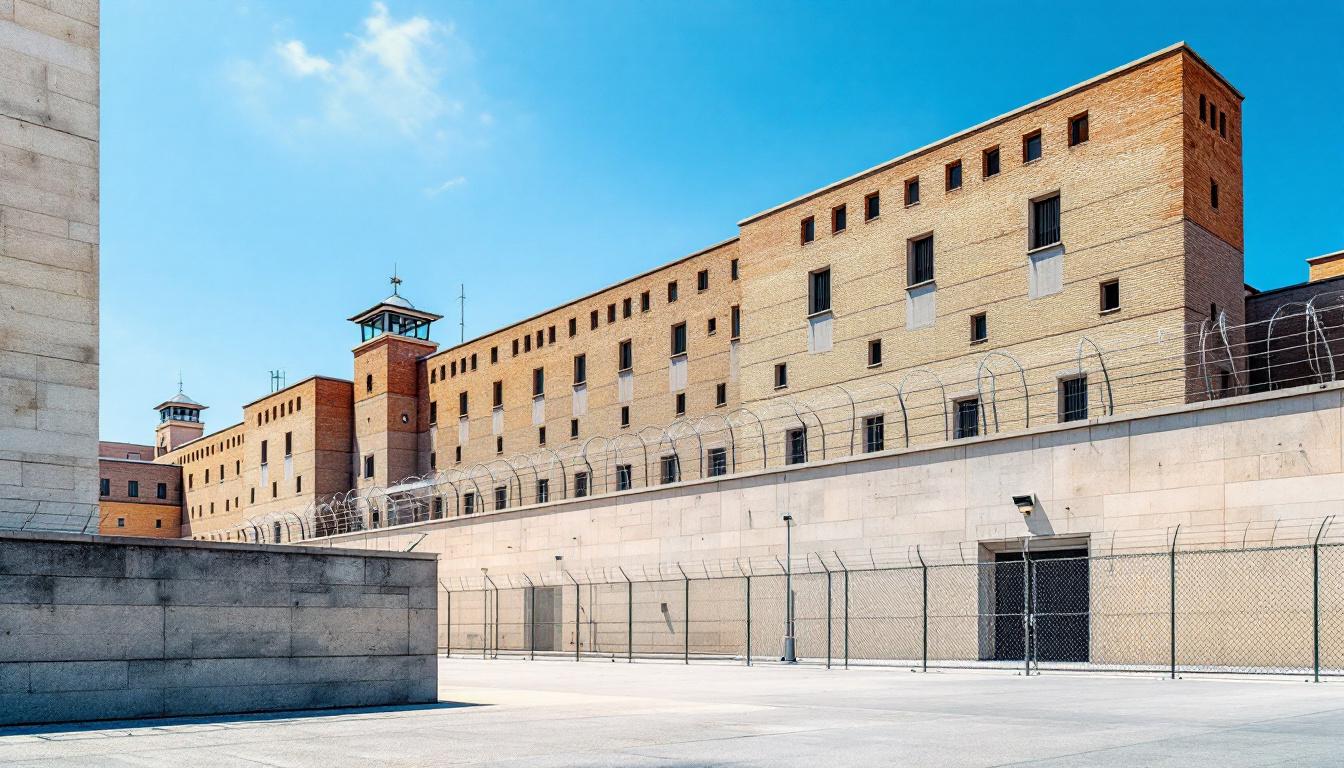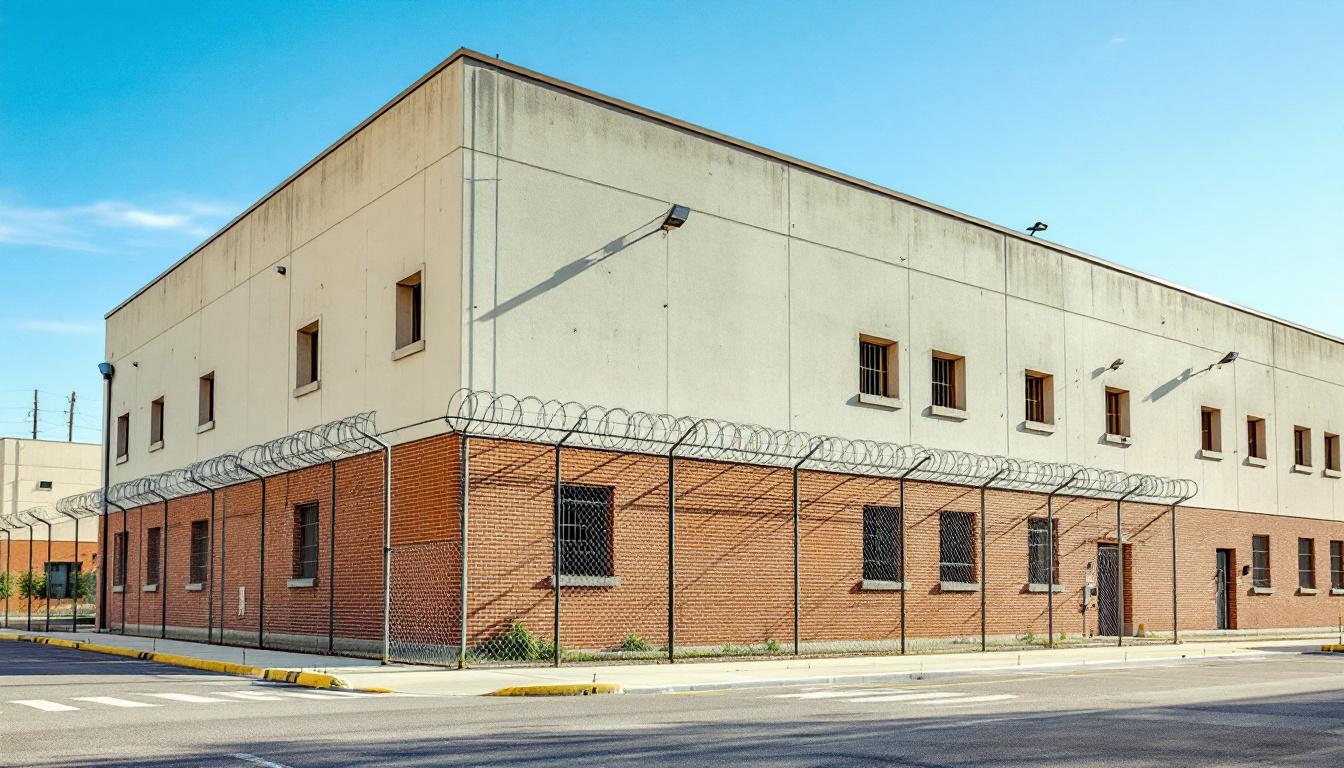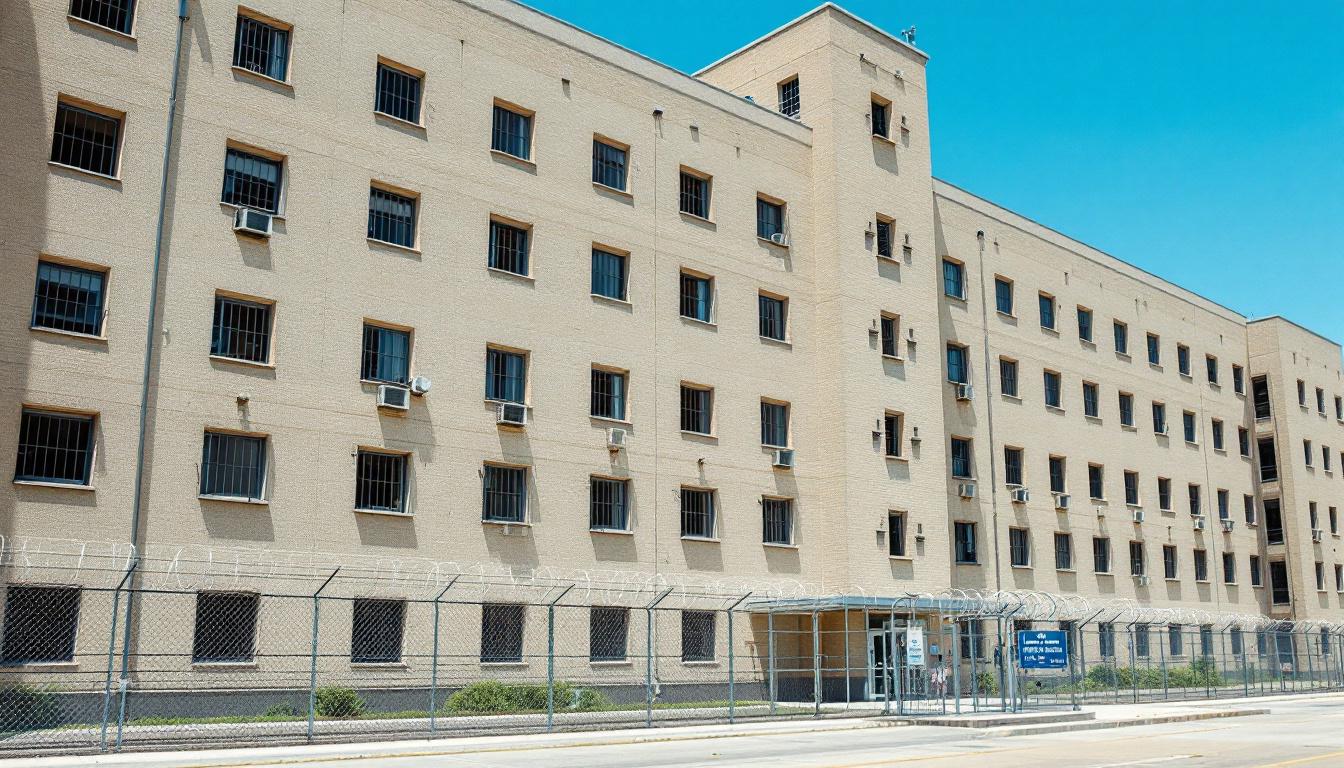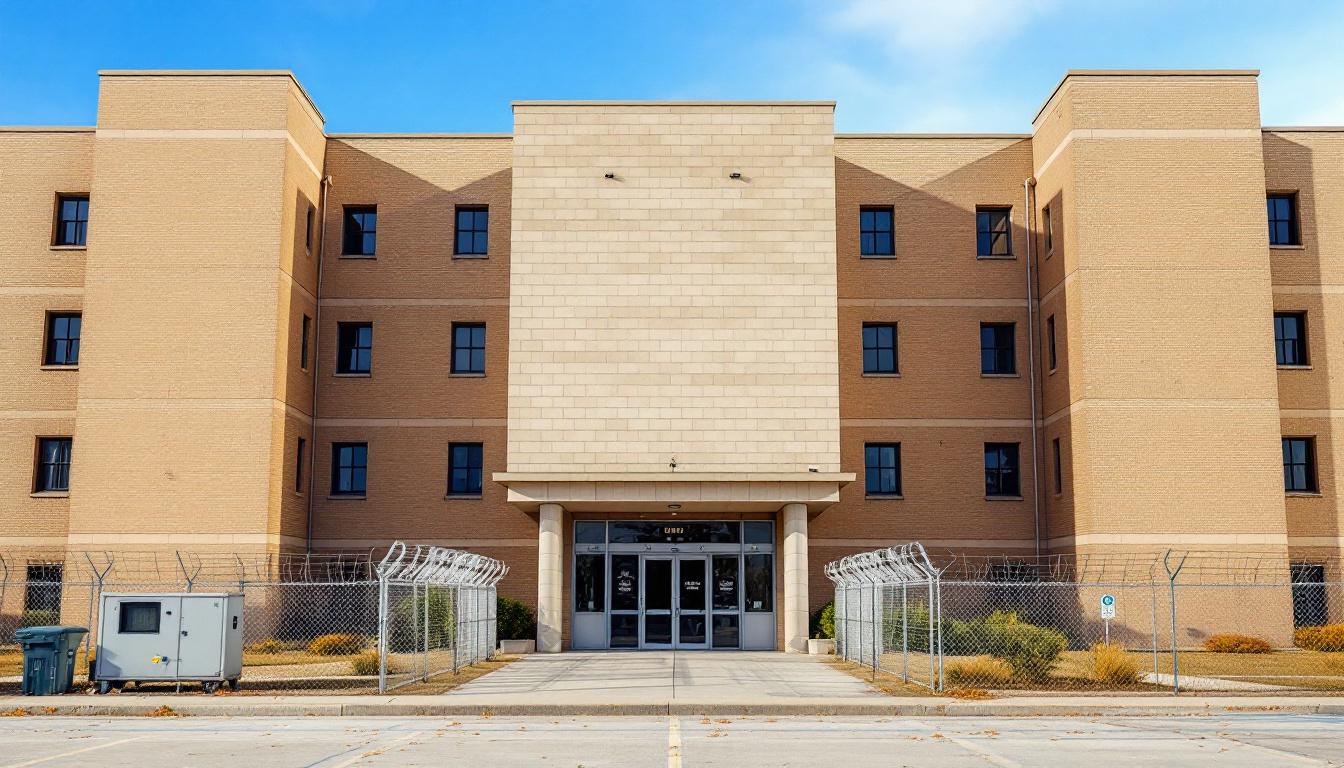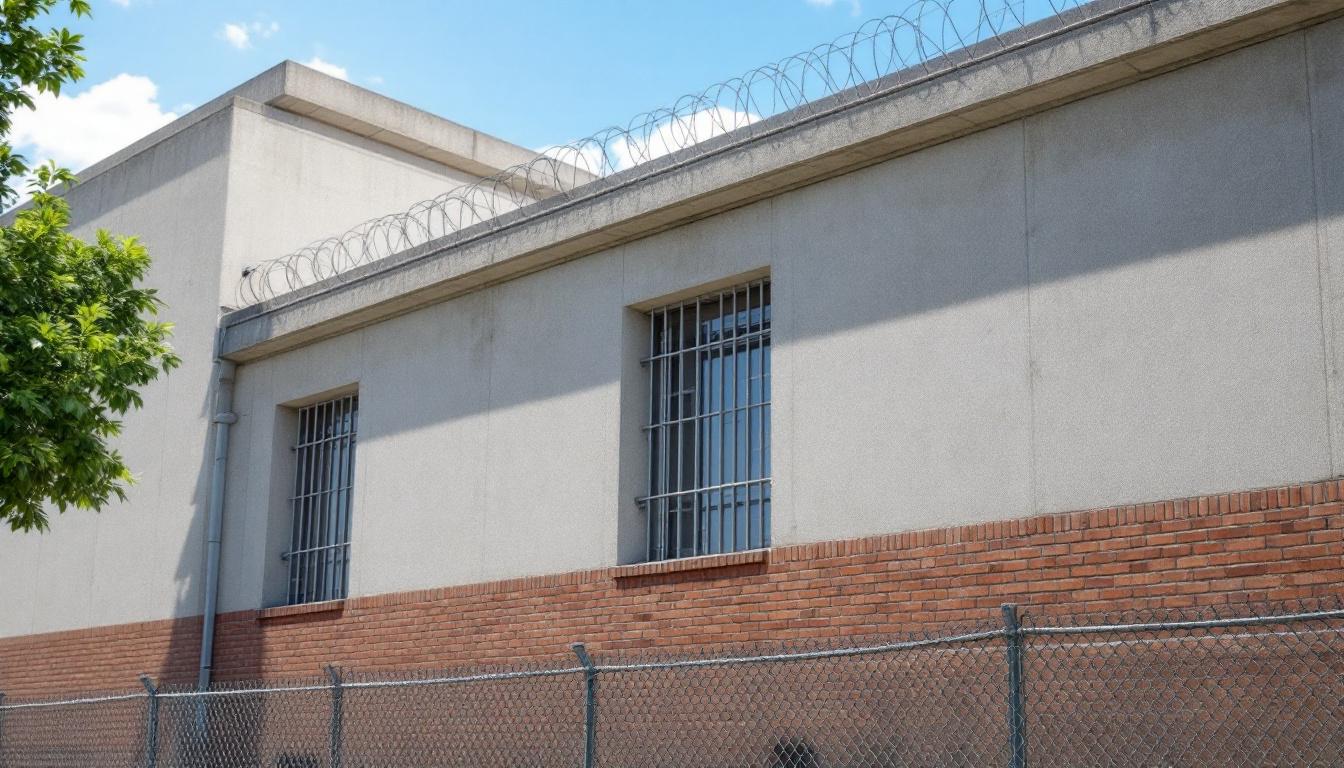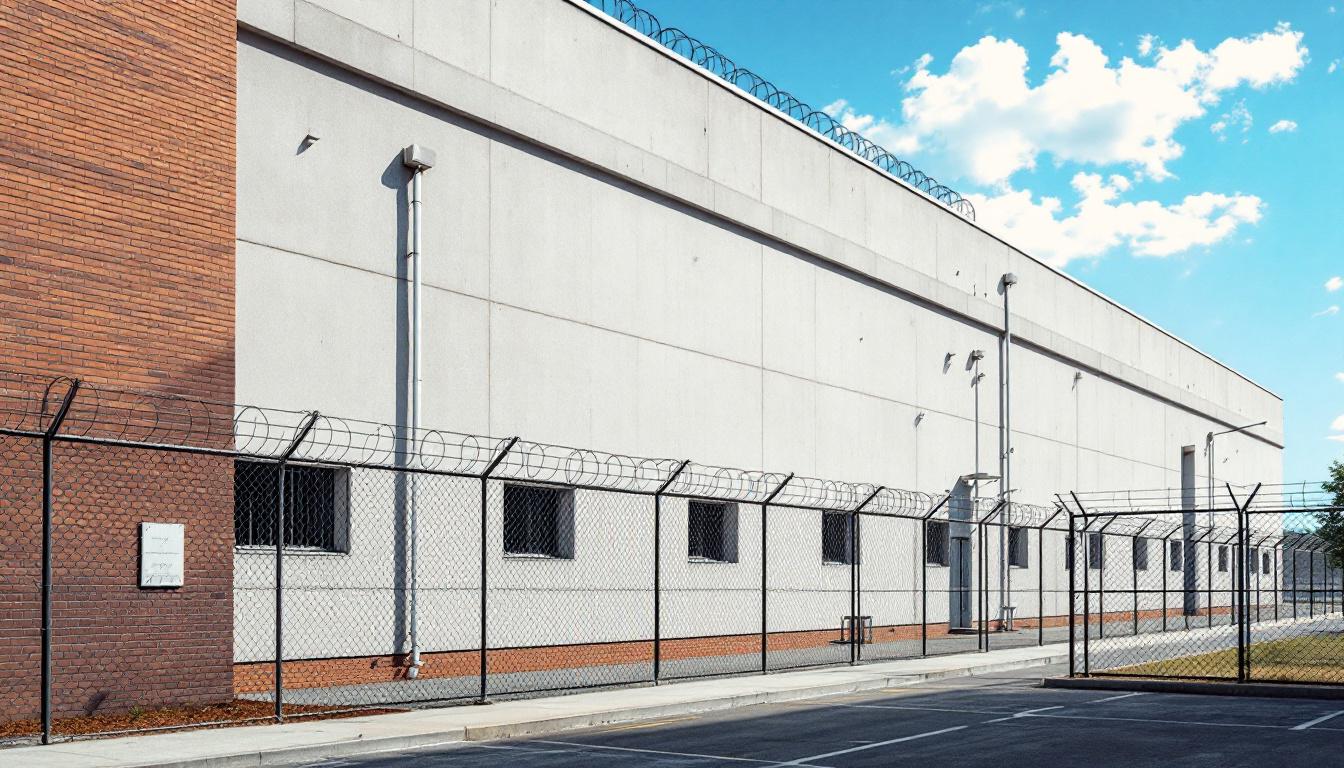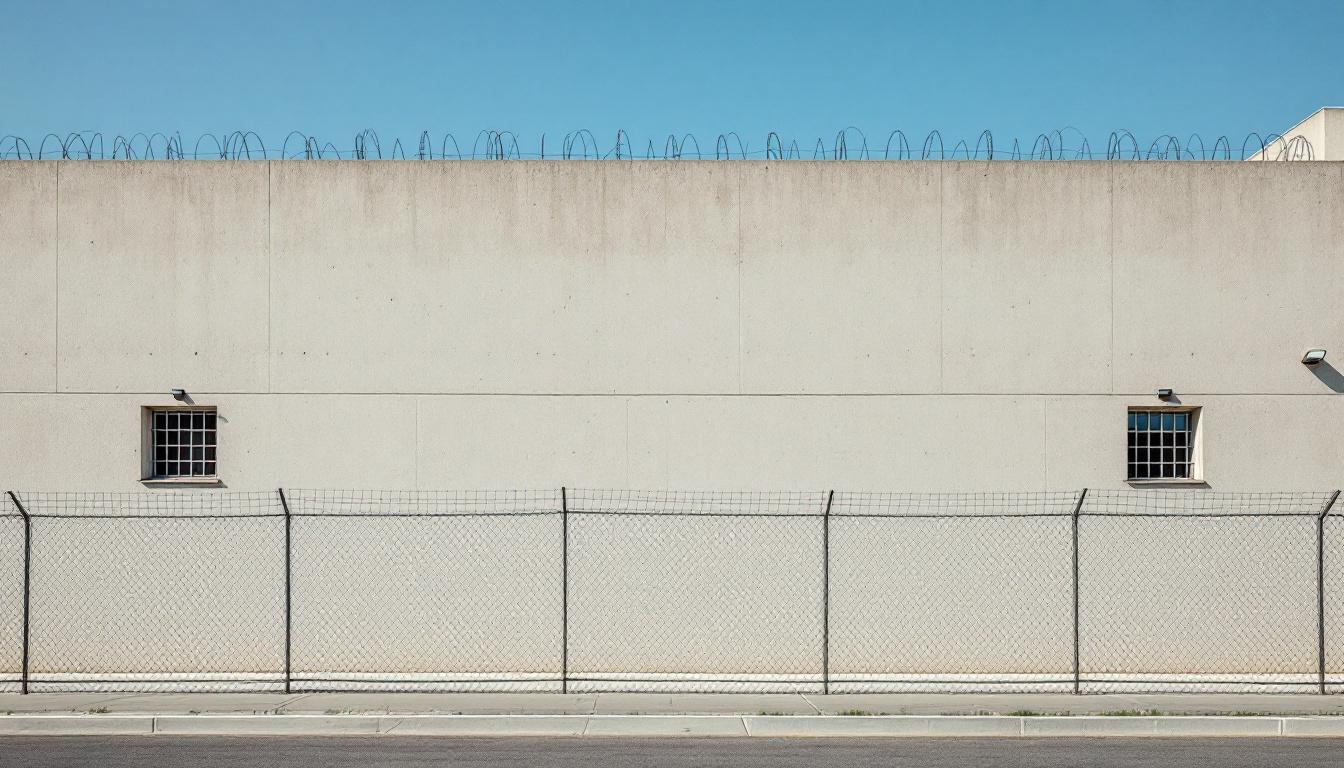
Quick Navigation
How to contact an inmate at Facility 8 Detention Facility
This comprehensive guide will walk you through how to connect with an inmate at Facility 8 Detention Facility. Follow the steps below to find an inmate and send letters and photos:
- Search for the inmate using our search tool below
- Create your account or log in to Penmate
- Write your message (up to 6,000 characters)
- Send instantly - inmates receive printed copies daily
Find an Inmate
Search for an inmate to start communicating today
Tip: You can search by first name, last name, or inmate ID number
To contact a person at Facility 8 Detention Facility start by searching for the person on the facility website. Perform a search by following these steps:
- Step 1: Enter their first name and last name into the search form and click "Search"
- Step 2: Locate their inmate record
- Step 3: Write down their Inmate ID and any housing information provided
Important! Be sure to enter the person's full name. Nicknames should not be used.
How to Send Messages to Inmates

You can use your phone or computer to send emails, letters, and photos to an inmate. Messages are sent electronically to inmate tablets or kiosks at the facility. If you would like to send a message, start by searching for an inmate at Facility 8 Detention Facility.
Sending Photos and Postcards

A great way to send love and support to a loved one at Facility 8 Detention Facility is to send photos and postcards. It only takes a few minutes to send photos from your phone and it makes a huge difference. You can also mail postcards with words of support and inspiration, or design your own postcard for special moments like birthdays and holidays.
Important! Be sure not to send any explicit photos or they may not be approved by the facility. You can also use a photo printing app like Penmate to make sure your photos are printed at the correct size (4x6 or 3x5) and are mailed according to the rules and regulations of Facility 8 Detention Facility.
Frequently asked questions about Facility 8 Detention Facility
-
How long does it take to deliver a message?
If you're sending an email message your letter is usually delivered within 24-48 hours. For messages sent via mail you should expect delivery within 3-7 days. All messages will need be approved by Facility 8 Detention Facility.
-
How much does it cost to send a message to Facility 8 Detention Facility?
You can send a message free using your phone or mail a message via USPS for the price of a $0.60 stamp and envelope. You can also purchase credits or e-stamps from services starting at $1.99.
-
What services can I use to contact an inmate at Facility 8 Detention Facility?
Penmate
You can use Penmate to send letters and photos to an inmate from your phone. It's an easy way to stay in touch during your loved one's incarceration. Use the inmate locator to find an inmate's location and contact information, then you can send messages within a few minutes.
Securus messaging
Securus may be another option for communicating with an inmate at Facility 8 Detention Facility. You can create a friends and family account and purchase credits to send messages. All messages will be reviewed and must be approved by the facility.
JPay
Some county jails and state prisons may support sending messages with JPay. You must register an account with the system, find your loved one, and purchase stamps to send messages. For some locations you can also attach photos.
Smart Jail Mail
You may also check if Smart Jail Mail is available at Facility 8 Detention Facility. Smart Jail Mail is operated by Smart Communications and has contracted with some state and county jails. After purchasing credits, your messages and photos are sent to the facility, printed out, and then handed out to your loved one.
-
What is the mailing address of Facility 8 Detention Facility?
Mailing address:
Facility 8 Detention Facility
446 Alta Rd
San Diego, CA 92158
Phone: (619) 210-0327Business hours:
- Monday: Open 24 hours
- Tuesday: Open 24 hours
- Wednesday: Open 24 hours
- Thursday: Open 24 hours
- Friday: Open 24 hours
- Saturday: Open 24 hours
- Sunday: Open 24 hours
-
What are the visiting hours at Facility 8 Detention Facility?
Visiting hours at Facility 8 Detention Facility vary by housing unit and security level. Generally, visits are scheduled on weekends and holidays, with some facilities offering weekday visits. Contact the facility directly at (619) 210-0327 or check their website for the current visiting schedule. Visits typically last 30-60 minutes and must be scheduled in advance.
-
What items are prohibited when sending mail to Facility 8 Detention Facility?
Prohibited items typically include: cash, personal checks, stamps, stickers, glitter, glue, tape, staples, paperclips, polaroid photos, musical or blank greeting cards, hardcover books, magazines with staples, and any items containing metal or electronics. Only send letters on plain white paper with blue or black ink. Photos must be printed on regular photo paper (no Polaroids). Always check with Facility 8 Detention Facility for their specific mail policies.
-
How do I send money to an inmate at Facility 8 Detention Facility?
You can send money to an inmate at Facility 8 Detention Facility through several methods: 1) Online using JPay, Access Corrections, or the facility's approved vendor, 2) Money orders mailed directly to the facility with the inmate's name and ID number, 3) Kiosks located in the facility lobby, or 4) Over the phone using a credit or debit card. Fees vary by method, typically ranging from $2.95 to $11.95 per transaction.
-
Can I schedule a video visit with an inmate at Facility 8 Detention Facility?
Many facilities now offer video visitation as an alternative to in-person visits. At Facility 8 Detention Facility, video visits may be available through services like Penmate, Securus Video Connect, GTL, or ICSolutions. Video visits typically cost $10-20 for 20-30 minutes and must be scheduled in advance. You'll need a computer or smartphone with a camera and reliable internet connection. Contact the facility for their specific video visitation policies and approved vendors.
-
What identification do I need to visit an inmate at Facility 8 Detention Facility?
All visitors must present valid government-issued photo identification such as a driver's license, state ID, passport, or military ID. Minors must be accompanied by a parent or legal guardian who can provide the minor's birth certificate. Some facilities require visitors to be on the inmate's approved visitation list, which may require a background check. Contact Facility 8 Detention Facility for specific ID requirements and visitor approval procedures.
-
How can I find out an inmate's release date?
To find an inmate's release date at Facility 8 Detention Facility, you can: 1) Use the online inmate search tool if available, 2) Call the facility's records department, 3) Contact the inmate's case manager or counselor, or 4) Have the inmate provide this information during a call or visit. For privacy reasons, some facilities only release this information to immediate family members.
Facility Overview
Contact Information
Facility 8 Detention Facility446 Alta Rd
San Diego, CA 92158
Phone: (619) 210-0327
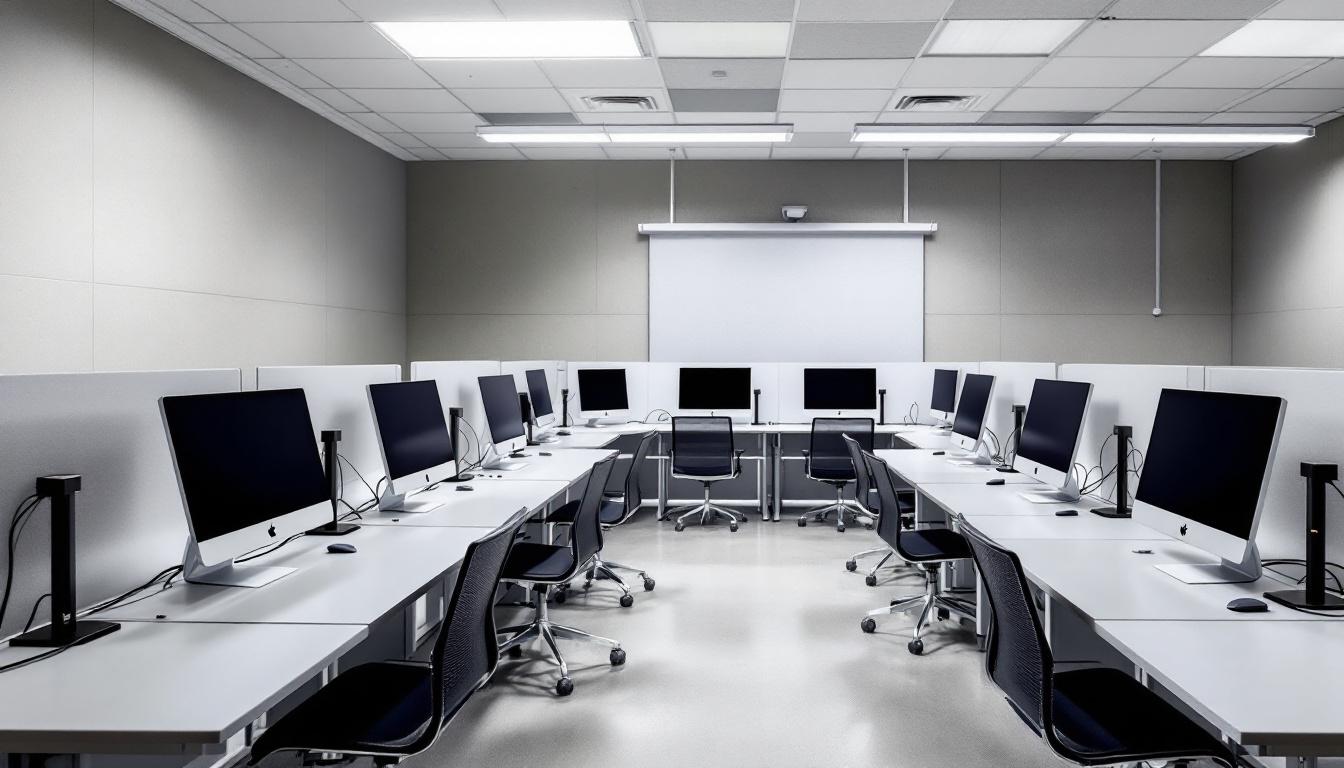
About Facility 8 Detention Facility
San Diego’s coastal community benefits from the comprehensive correctional services that Facility 8 provides as an integral component of California’s broader rehabilitation network. Through collaborative partnerships with local organizations and state agencies, this CA correctional facility works to address the complex needs of individuals within the correctional system while maintaining strong connections to the surrounding metropolitan area. The facility’s approach emphasizes coordination between various departments and community resources, recognizing that effective correctional outcomes often depend on multi-faceted support systems that extend beyond institutional walls.
Within California’s extensive correctional framework, Facility 8 typically operates programs designed to support both immediate custody requirements and longer-term rehabilitation goals. Inmates services may include educational opportunities, vocational training programs, and counseling resources that align with state-wide correctional standards. The facility generally maintains healthcare services, recreational activities, and visiting programs that help preserve family connections throughout the incarceration period. Staff members often coordinate with probation departments, social services, and community-based organizations to facilitate transitions and support networks.
Located in San Diego County, this correctional facility serves as part of the Pacific region’s approach to managing correctional populations while addressing the comprehensive demographic and geographic considerations of Southern California. The facility’s operations typically reflect California’s emphasis on rehabilitation-focused programming, though specific offerings may vary based on population needs, funding availability, and operational capacity. Through its role in the state’s correctional system, Facility 8 contributes to public safety objectives while working toward the broader goal of reducing recidivism through comprehensive support services and community collaboration.
Programs & Services
Personal transformation lies at the heart of the comprehensive service delivery model that emphasizes skill-building and cognitive development for inmates seeking meaningful change. This facility typically maintains a philosophy centered on equipping individuals with practical tools and educational foundations necessary for successful community reintegration. Through carefully structured interventions and evidence-based approaches, the services often focus on addressing underlying factors that contribute to criminal behavior while simultaneously building positive life skills and professional competencies.
Educational initiatives form a cornerstone of the developmental approach, with services that may provide basic literacy instruction, GED preparation, and ESL classes for non-native English speakers. These academic services typically emphasize both foundational learning and practical application, helping inmates develop critical thinking skills alongside traditional educational competencies. In addition to this, vocational training services often include hands-on instruction in marketable trades and technical skills, preparing participants for employment opportunities upon release. The vocational components may encompass various industry-relevant disciplines, from construction and automotive repair to computer literacy and customer service skills.
Rehabilitation programs typically address behavioral patterns and decision-making processes through structured therapeutic interventions and counseling services. These support services often include substance abuse treatment, anger management, and cognitive-behavioral programming designed to help inmates develop healthier coping mechanisms and interpersonal skills. Food service operations may provide both practical work experience and life skills training, teaching inmates valuable lessons in teamwork, time management, and professional responsibility while contributing to the facility’s daily operations.
Daily Life & Visitation
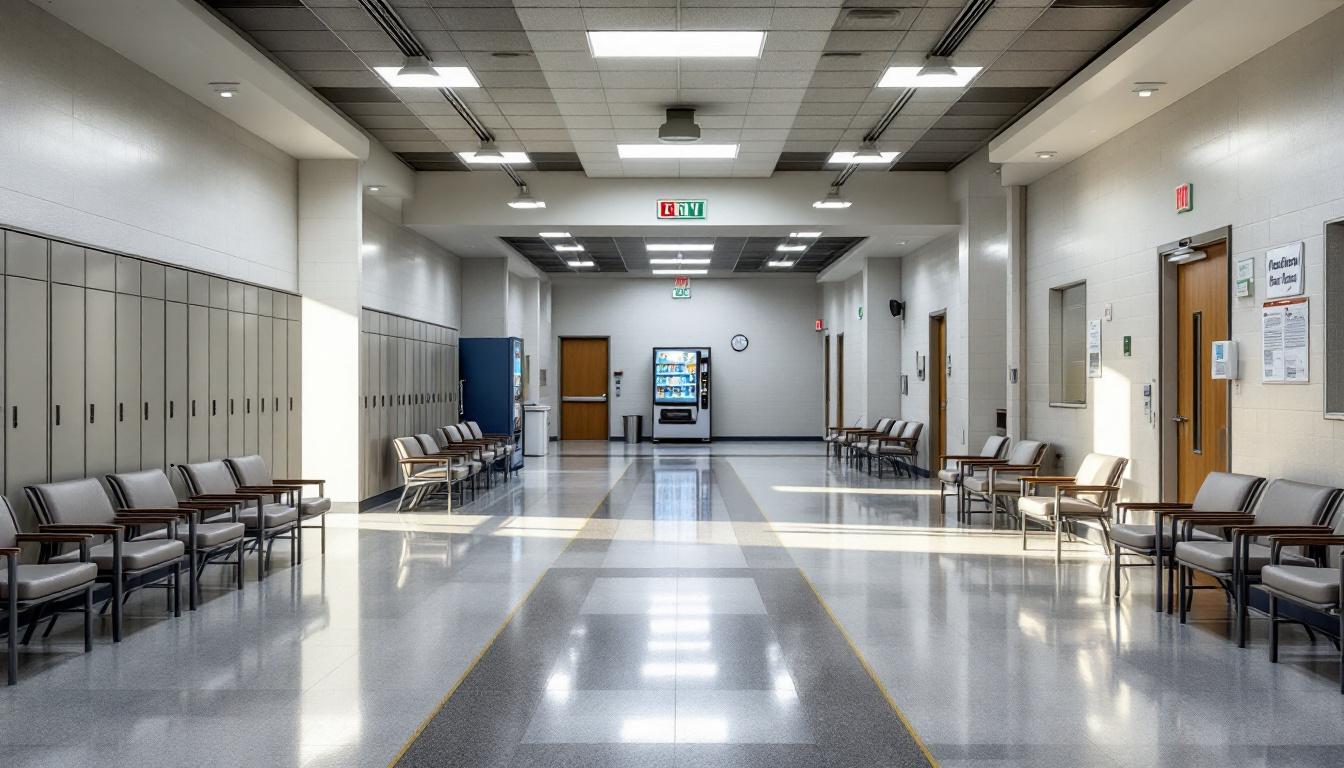
The concrete walls and steel fixtures that define the living spaces within this California correctional facility create an environment where inmates must learn to find routine and purpose within highly structured surroundings. Currently, the daily schedule revolves around predetermined meal times, count procedures, and programmed activities that provide essential structure to institutional life. The rhythm of facility operations continues to shape how residents organize their personal time, with most inmates developing individual strategies for maintaining mental and physical well-being within these constraints.
Housing units typically accommodate multiple inmates in shared cells or dormitory-style arrangements, where personal space becomes a precious commodity that residents learn to respect and negotiate. The dining halls serve meals at designated times, bringing together inmates from different housing areas while maintaining necessary security protocols. Living accommodations generally include basic furnishings and limited storage for approved personal items, with commissary purchases providing opportunities for inmates to supplement standard-issued supplies and maintain connections to personal preferences and comfort items.
In addition to this structured living environment, the facility provides various recreational activities, educational programs, and work assignments that help inmates develop skills and maintain family connections. Recreation time typically includes access to outdoor yards, gymnasium facilities, and organized sports activities that provide physical outlets and social interaction opportunities. Despite this institutional setting, visitation programs and communication systems allow inmates to maintain important relationships with family members and support networks, while work assignments within the facility operations offer inmates the chance to develop job skills and contribute to the daily functioning of their living environment.
Ready to Connect?
Start communicating with your loved one today
Search for an Inmate
